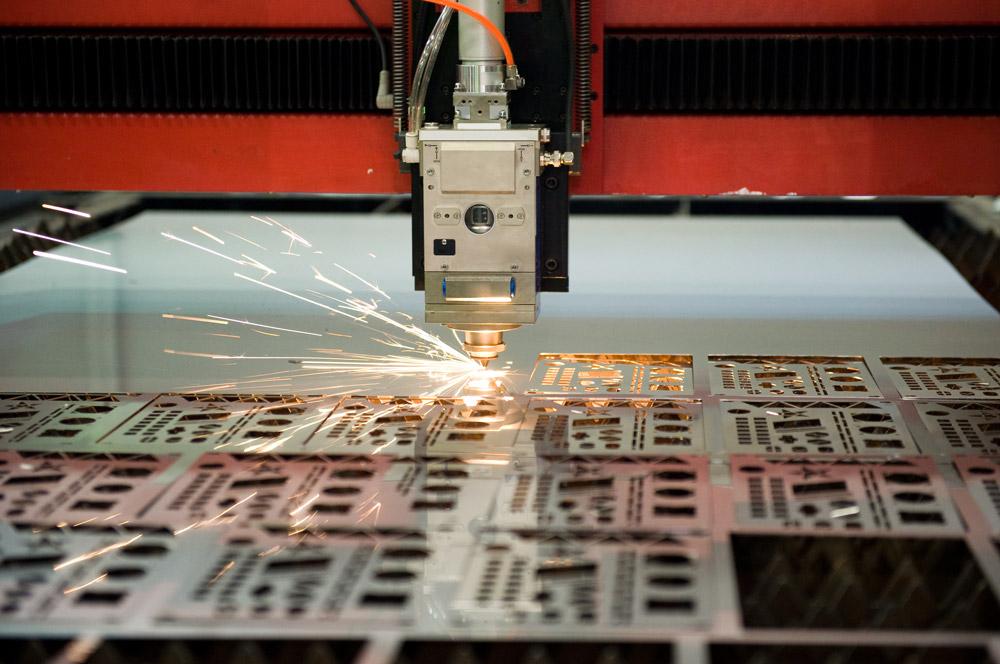In the fast-paced world of industrial manufacturing, cutting intricate metal designs has become a cornerstone of innovation and efficiency. Manufacturers are continually seeking advanced techniques to meet the growing demand for precision and creativity in metalwork. If you’re part of this dynamic industry, understanding the nuances of cutting intricate metal designs can propel your business to new heights.

The Importance of Precision in Metal Design
Before diving into the methods and tools used for cutting intricate metal designs, it’s crucial to recognize why precision is paramount. From structural components to decorative elements, precision ensures functionality, quality, and aesthetic appeal. The right cutting technique minimizes waste, reduces costs, and enhances the final product’s durability and appearance.
With industries like aerospace, automotive, and architecture increasingly relying on precise metal components, mastering the art of intricate design is no longer optionalit’s necessary.
Choosing the Right Metal for Your Design
Understanding Different Metals
Different projects require different metals, each with unique properties that influence the cutting process. Common metals include steel, aluminum, and copper. Each metal’s hardness, thickness, and intended use will guide your choice of tools and methods.
For those interested in learning more about the specifics of cutting carbon steel, The carbon steel cutting guide provides detailed insights into this robust material.
Matching Metal Properties to Design Requirements
When planning your intricate metal designs, it’s important to align metal properties with the project requirements. Softer metals like aluminum may be ideal for detailed engraving, while stronger, more durable options like titanium are perfect for high-stress applications.
Popular Techniques for Cutting Detailed Designs
Laser Cutting
Laser cutting stands out as a leader in precision. The concentrated laser beam ensures fine details and clean edges, making it ideal for complex patterns. It’s a preferred choice for both small-scale artistic creations and large industrial applications.
Waterjet Cutting
When heat-sensitive metals need attention, waterjet cutting offers a cold-cutting solution. It’s versatile and capable of cutting thick and thin metals without affecting the surrounding area.
CNC Machining
CNC machines provide automated precision, perfect for repetitive tasks that require high levels of accuracy. They are prominent in industries where uniformity and reliability are critical.
To enhance your understanding of manual, yet precise techniques, consider exploring manual metal cutting tools. These traditional methods remain useful for intricate tasks that demand a personal touch.
Ultrasonic Cutting
Ultrasonic cutting employs high-frequency vibrations to slice through metal smoothly. It’s excellent for metals that require delicate handling, and it minimizes stress on the workpiece.
Key Tools for Intricate Metal Cuts
Selection of Cutting Tools
The selection of cutting tools is pivotal in achieving precision. Whether using CNC machines or handheld tools, the cutting tool’s sharpness, material, and angle can significantly impact the results.
For broader technique exploration, visit this source on effective metal cutting methods.
Maintaining and Storing Tools
Proper maintenance and storage extend the life of your cutting tools. Regular cleaning, proper lubrication, and safe storage prevent damage and ensure consistent cutting quality.
Integrating CAD in Metal Design
Computer-Aided Design (CAD) software revolutionizes the preliminary stages of metal design. It allows for intricate details to be planned meticulously before cutting begins, reducing errors and increasing efficiency. If you’re interested in utilizing CAD for your processes, the CAD design tips can guide your development of complex designs.
Ensuring Safety in Metal Cutting
Protective Gear and Environment
Safety is non-negotiable. Protective gear such as goggles, gloves, and proper clothing should be mandatory. Additionally, maintaining a clean workplace with adequate ventilation minimizes hazards.
To broaden your knowledge on maintaining safety standards, explore metal cutting safety tips.
Training and Protocols
Regular training sessions for workers emphasize the importance of safety protocols. It’s crucial to keep the workforce updated on the latest safety practices and emergency procedures.
Optimizing the Cutting Process
Efficient Material Usage
Smart material usage reduces waste. Planning cuts to maximize material efficiency not only saves costs but also contributes to environmental conservation.
Monitoring and Adjusting Techniques
Consistent monitoring and adapting cutting processes as needed ensure optimal performance. This may involve routine checks and adjustments to equipment settings or techniques.
Advanced Cutting Technologies
Hybrid Techniques
The fusion of laser and waterjet cutting brings hybrid benefitsstrength meets precision without compromising efficiency.
Smart Systems
Smart technologies such as AI and IoT enhance precision by offering real-time monitoring and adjustments. These innovations mark the future of complex metal cutting.
Metal Design Trends and Industry Impact
The Move Towards Sustainability
As industries strive for eco-friendliness, recycling and waste reduction have become prevalent. Metal fabrication aligns with these trends by utilizing sustainable materials and waste-cutting technologies.
Customization and Personalization
The demand for unique and customized metal products is rising, thanks to advancements in cutting technologies that allow for such variations.
Final Thoughts on Metal Cutting Techniques
Embarking on the journey of cutting intricate metal designs elevates not only products but also opens new avenues for innovation in your business. Keeping pace with modern techniques, maintaining stringent safety standards, and embracing new technologies ensure your place at the forefront of metal fabrication.

FAQs
What type of metals are best for intricate designs?
Softer metals like aluminum are preferable for intricate designs due to easier handling, while stronger metals like titanium are chosen for durability.
Is laser cutting superior to waterjet cutting?
It depends on the project; laser cutting offers precision and speed, while waterjet cutting is perfect for heat-sensitive and thicker metals.
What safety measures should be taken during metal cutting?
Ensuring adequate protective gear, workplace ventilation, and adherence to safety protocols are essential to prevent injuries during metal cutting activities.
This article contains affiliate links. We may earn a commission at no extra cost to you.

